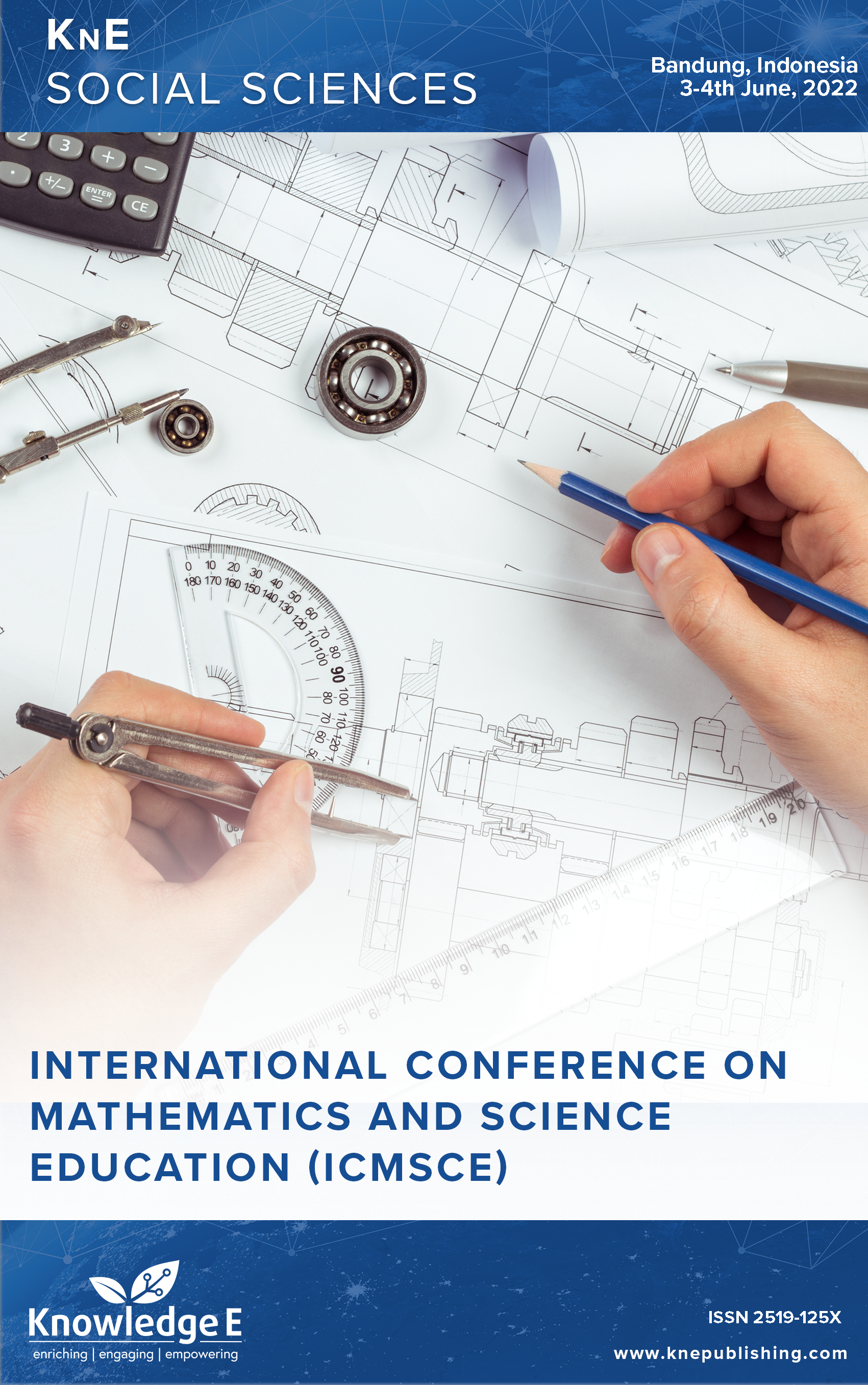The Effect of SIMAS ERIC Learning Model on Protist Material to Improve Students' Cognitive Learning Outcomes in Class X
DOI:
https://doi.org/10.18502/kss.v9i13.16007Abstract
Various problems that cause low student learning outcomes are thought to be due to the lack of teacher innovation when teaching in the classroom, the selection of learning models or strategies that do not facilitate students’ awareness and interest in learning, as well as other influencing problems. One of the models that can help teachers train students to plan lessons, monitor the learning process, and evaluate learning outcomes is the Simas Eric learning model with syntax skimming, mind mapping, questioning, exploring, writing, and communicating. This study aimed to determine the effect of the SIMAS ERIC learning model on cognitive learning outcomes of Biology students at SMAN 24 Bandung. This is a quasi-experimental research with a non-equivalent pretest-posttest control group design. The participants in this study were class X MIPA 1 and X MIPA 3 students at SMAN 24 Bandung. Data were collected through the results of observations of students’ cognitive learning outcomes. Data analysis was done using the ANOVA technique, which shows the learning outcomes of the SIMAS ERIC model on protist material, affecting the cognitive learning outcomes of Biology students at SMAN 24 Bandung with an average cognitive learning outcome of experimental class students of 84.50%. The average cognitive learning outcome of control class students was 78.50%. The experimental class obtained a higher average cognitive learning outcome than the control class. The benefit of this research is that it can determine the effect of the Simas Eric model based on students’ cognitive learning outcomes.
Keywords: SIMAS ERIC learning model, protist material, cognitive learning outcomes
References
Ramayulis H. “Dasar-dasar kependidikan suatu pengantar ilmu pendidikan.” p. 2019.
Rumapea ME. “Kurikulum 2013 yang berkarakter.,” Jupiis: Jurnal Pendidikan Ilmu- Ilmu Sosial. vol. 5, no. 2, p. 2014. https://doi.org/10.24114/jupiis.v5i2.1112. DOI: https://doi.org/10.24114/jupiis.v5i2.1112
Warsono W. Guru: antara pendidik, profesi, dan aktor sosial. The Journal of Society and Media. 2017;1(1):1–10. DOI: https://doi.org/10.26740/jsm.v1n1.p1-10
Rusman D. Model-model pembelajaran. Jakarta: Raja Graf; 2012.
Setiawan D, Sitorus J. Urgensi tuntutan profesionalisme dan harapan menjadi guru berkarakter (Studi kasus: sekolah dasar dan sekolah menengah pertama di Kabupaten Batubara). Cakrawala Pendidikan. 2017;36(1):122–9. DOI: https://doi.org/10.21831/cp.v36i1.11382
Seknun MY. “Kedudukan guru sebagai pendidik.,” Lentera Pendidikan: Jurnal Ilmu Tarbiyah dan Keguruan. vol. 15, no. 1, pp. 120–131, 2012. https://doi.org/10.24252/lp.2012v15n1a10. DOI: https://doi.org/10.24252/lp.2012v15n1a10
Riduwan A. Belajar mudah penelitian: untuk guru karyawan dan peneliti pemula. Bandung: Alfabeta; 2009.
Bahri A. “Strategi pembelajaran Reading Questioning and Answering (RQA) pada perkuliahan fisiologi hewan untuk meningkatkan hasil belajar kognitif mahasiswa.” BIONATURE” Jurnal Kajian, Penelitian, dan Pengajaran Biologi”. vol. 17, no. 2, pp. 106–113, 2016.
Thalib M, Corebima AD, Ghofur A. Comparison on critical thinking skill and cognitive learning outcome among students of X grade with high and low academic ability in Ternate through Reading Questioning Answering (RQA) strategy. Jurnal Pendidikan Sains. 2017;5(1):26–31.
Hariyadi S, Corebima AD, Zubaidah S. Contribution of mind mapping, summarizing, and questioning in the RQA learning model to genetic learning outcomes. Journal of Turkish Science Education. 2018;15(1):80–8.
Samudera W, Wildan W, Hadisaputra S, Gunawan G. “Development of chemistry learning intruments based on reading questiong and answering strategy mixed with creative problem solving.” In: Journal of Physics: Conference Series. pp. 012002. IOP Publishing (2019). https://doi.org/10.1088/1742-6596/1364/1/012002. DOI: https://doi.org/10.1088/1742-6596/1364/1/012002
E.K. Putri, M. Irianti, and Azhar, “The application of simas eric model to enhance students cognitive study result on global warming material in XI Class MAN 1 Pekanbaru.,” JOM FKIP UNRI. vol. 5, no. 1, pp. 1–9, 2018.
Darmawan E, Zubaidah S, Susilo H, Suwono H. “Development of instructional model SIMAS ERIC (Skimming, Mind Mapping, Questioning, Exploring, Writing, Communicating) using learning development cycle.,” Research Report. p. 2016.
Somadayo S. Penerapan teknik skimming scanning untuk meningkatkan pembelajaran membaca pemahaman siswa kelas V SD Negeri Salero 1 Ternate., 2009.
I.W., Darmayoga, I.W., Lasmawan, and A.A.I.N. Marhaeni, “Pengaruh implementasi metode mind mapping terhadap hasil belajar IPS ditinjau dari minat siswa kelas IV SD Sathya Sai Denpasar,” (2013).
Diana D. “Pengaruh penerapan metode peta pikiran (mind map) terhadap kemampuan mendesain pembelajaran dalam kegiatan simulasi pada mahasiswa PG-PAUD semester akhir Universitas Muhammadiyah Pontianak.,” Penakreatif. vol. 2, no. 2, p. 2015.
Retnosari T, Nurbaity N, Paristiowati M. Pengaruh metode praktikum IPA berbasis Science Writing Heuristic (SWH) dan motivasi berprestasi terhadap hasil belajar kognitif peserta didik [ JRPK]. Jurnal Riset Pendidikan Kimia. 2017;7(2):123–31. DOI: https://doi.org/10.21009/JRPK.072.06
Hilgard ER, Bower GH. “Schemas versus mental model in human memory.,” Chinester: John Wiley and Sons. p. 1975.

